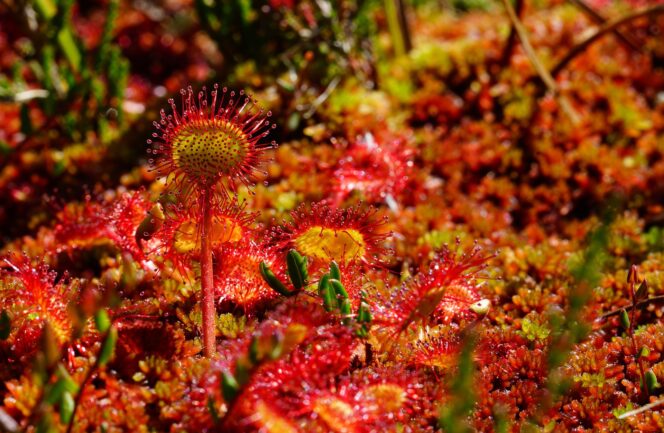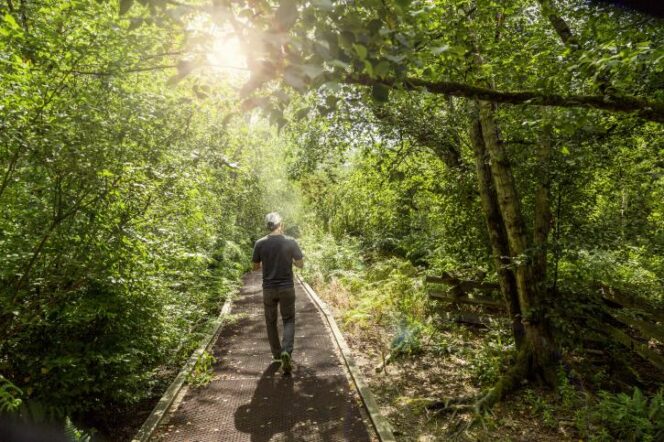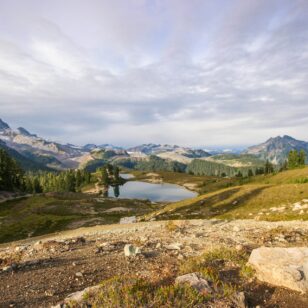
Carnivorous sundew plants in a bog. Photo: Hans/Pixabay
In Vancouver, nature is all around us. We often think of the mountains, the ocean, or the forest, but Vancouver has unique wetland bogs as well. Home to many unique species of plants and animals, bogs are a great place to connect with nature and go on an easy hike.
Until further notice, in line with the public health order, non-essential travel into, within, and out of BC is not recommended. BC residents, let’s do our part by continuing to stay small and support local with your immediate household, in accordance with the latest guidelines.
Bog Ecology
Bogs are a unique wetland ecosystem that is a holdover from the Arctic climates of the ice age. In a bog, the soil is made up of partially decomposed organic matter, known as peat. Mounds of wet moss and unique plants grow on the surface, but they need to be tolerant of wet and acidic soil to survive here. Bogs are also home to lots of interesting animals like painted turtles and many species of birds.
Bring a plant and animal ID book or an app like Seek by iNaturalist on your walk around a bog. We’re sure you’ll find some new-to-you plants and animals. Watch for sundew, a carniv0rous plants. It traps insects in its sticky hairs!
Burns Bog and the Delta Nature Reserve
Delta’s Burns Bog is huge – over eight times bigger than Stanley Park. Most of the bog is closed to the public and managed as an Ecological Conservancy Area to protect the sensitive ecosystem.
But you can hike through the eastern side of the bog in the Delta Nature Reserve. Follow raised boardwalks through the forest, past streams, and over wetlands. With around 3km of trails to explore, plan to spend about an hour on your hike.
https://www.instagram.com/p/CFSzw5OAWXc/
Burnaby Lake Regional Park
The wetlands around Burnaby Lake are a great place to experience a peat bog ecosystem without leaving the city. Take a walk around the lake to spot some unique wetlands plants like cloudberry and birds such as herons and many species of ducks. The 11-km-long loop takes about 3 hours to walk.
The South Shore Trail has many sections of boardwalk that take you over wet areas. But pay attention to the sections of path between the boardwalks. Some traverse sections of peat bog that can feel bouncy or springy underfoot!
https://www.instagram.com/p/CAgvWSQhG4J/
Camosun Bog, Pacific Spirit Regional Park
Located in Pacific Spirit Regional Park near UBC, Camosun Bog (xʷməm̓qʷe:m) is an important place for the Musqueam Nation (məθkʷəy̓əm). Traditionally, it was a source of food and medicine. The bog was nearly destroyed through infill and draining, but since 1996 the Camosun Bog Restoration Group has worked to reverse the damage.
Today you can walk around the outside of the bog on a 300-metre-long boardwalk that protects the sensitive sphagnum moss. Pause to read the interpretive signs along the way to learn about bog plants like Labrador tea, bog laurel, salal, and sundews.
https://www.instagram.com/p/B-DSN-shmYG/
Richmond Nature Park
The 200-acre Richmond Nature Park protects a raised peat bog ecosystem that once covered most of what is now Richmond. It’s a great place to spot many wetlands plants like Labrador tea, bog rosemary, native blueberry, and cloudberry. Stop in at the Nature House to experience the interactive exhibits.
Use the park’s Self-Guided Nature Walk brochure to take an easy walk around the park that will take about an hour. Along the way, you’ll learn how the bog was formed, identify key plants and animals, and see how the bog is under threat from invasive species and development.

Richmond Nature Park. Photo: Tourism Richmond
















